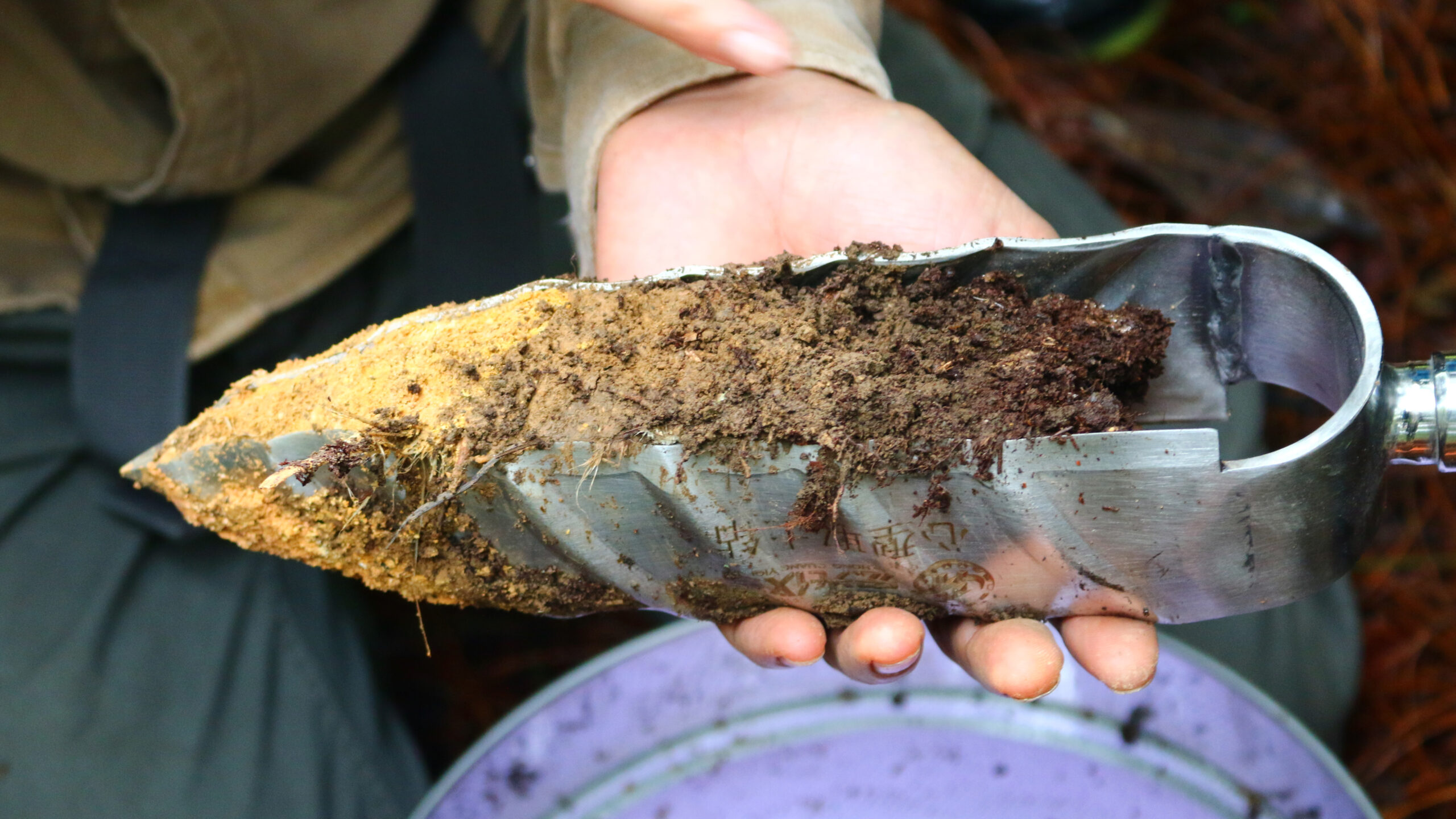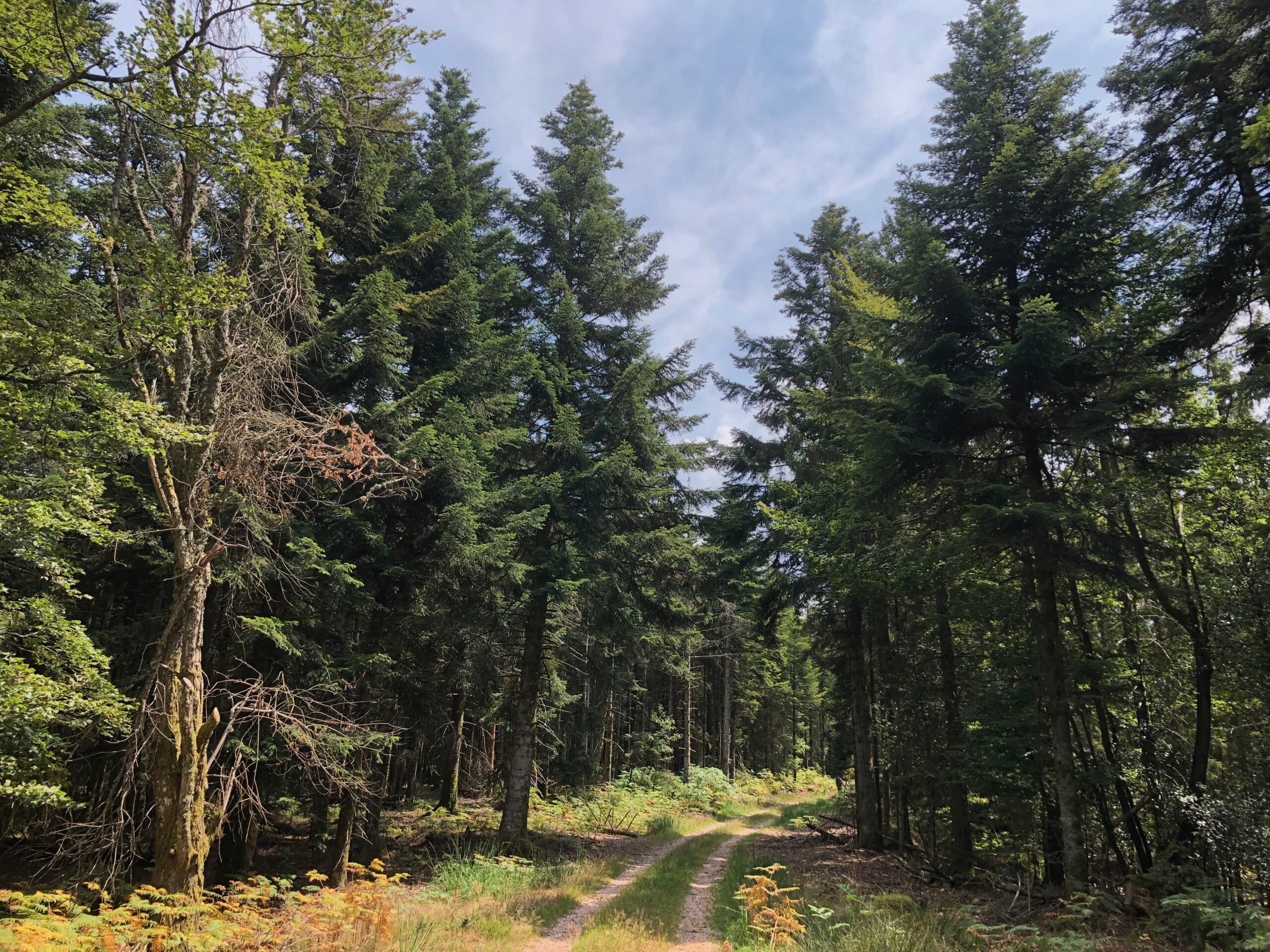Across four forests, researchers have leveraged data from the 1000 Fungal Genomes project to form new connections between fungal guilds, genes and function.
If a tree falls in the forest — whether or not anyone registers the sound — one thing is for sure: there are lots of fungi around. Within a forest’s soil, hundreds of species decompose debris, mobilize nutrients from that decay, and deliver those nutrients to tree roots and soil. These fungi help shape a forest’s ecology. They store carbon and cycle key nutrients like nitrogen and phosphorus.
This way, the fungi of forest soils hold keys to tree health and carbon storage — skills that matter increasingly as the climate warms. However, these are complicated interactions to untangle. Fungi work in cooperation to support a forest, and species vary across Earth’s ecosystems.
Recently, in work published in New Phytologist, researchers have pioneered new understanding of which fungi take on certain functions at the forest floor. For the first time, they compared three different fungal guilds in a range of different locations. They sampled soils in four forest ecosystems, extracted RNA to understand gene expression, and developed new tools to map that soil RNA to fungal genomes.
The U.S. Department of Energy (DOE) Joint Genome Institute (JGI), a DOE Office of Science User Facility located at Lawrence Berkeley National Laboratory (Berkeley Lab) sequenced 1 trillion bases — a terabase — of soil RNA for this project, and produced the reference genomes that allowed for mapping these RNA reads. “Currently, this is the largest JGI-sequenced fungal metatranscriptome yet,” said Igor Grigoriev, Fungal Genomics Program Head at the JGI.
Along with an improved understanding of multiple forest systems, this work sets up protocols and pipelines that other teams can use around the world.
These tools give researchers a way to access much more information about fungi in these environments. “Now with these new tools — metatranscriptomics, RNA sequencing of soil RNA — we can access — ‘What are they doing? How do they interact?’” said senior author Francis Martin, a Research Director Emeritus at the National Research Institute for Agriculture, Food and Environment (INRAE).

For this work, researchers collected soil cores from a variety of forests in Europe and Canada. (Courtesy of Francis Martin)
Remarkable Similarity Despite Vast Diversity
For this study, researchers collected soil samples from four sites: Aspurz, Spain; Champenoux, France; Lamborn, Sweden; Montmorency, Canada. These sites respectively represent Mediterranean, temperate, and boreal forests.
Many different fungi appear in the soil samples of these varied biomes; the forests share only about 20% of their fungal species. To make useful comparisons, the researchers had to work outside of taxonomy. “And the way we found was to focus on comparison of expression levels between fungal trophic guilds,” said Lucas Auer, a research engineer at INRAE and one of the first authors of this work.
To compare these trophic guilds, this team focused on three main groups of fungi that appeared in all forests they sampled. These guilds are common to forests around the world, as well as meadows and pastures: saprotrophs disassemble debris and dead organisms to free up their nutrients; mycorrhizal symbionts shuttle water and nutrients to trees; plant pathogens colonize living plants to feed on them.
Across the forest types, Martin and his team combed soil samples to see which genes these three fungal guilds used to grow and metabolize nutrients. They sequenced all of the RNA found in soil samples, and assembled those RNA transcripts into a metatranscriptome. Overall, they found that despite vast species diversity, each guild carried out remarkably similar functions across different forests. Primary metabolism, cell activity, and fungal development looked quite alike for each guild of saprotrophs, mycorrhizal symbionts, and pathogens, regardless of whether a sample came from the soil below a pine or an oak tree, in Sweden or Quebec.
Ecologically, Martin suggests this redundancy is protective, a bit like diversifying an investment portfolio. If a stress like wildfire or drought threatens some fungal species, other fungi will fill in needed functionalities.
This work also shows new overlap between the functions of different fungal guilds. Saprotrophs and mycorrhizal symbionts have historically been divided into separate ecological niches — recyclers and transporters, respectively. However, Martin’s team found that both guilds express similar genes for degrading fungal cell walls, the so-called fungal necromass, suggesting these guilds share the responsibility of recycling fungal dead material.
The Reference Genomes that Paved the Way
This project stems from a Community Science Program proposal that Martin submitted in 2012. At that time, the field had surveyed many different soil communities for taxonomic diversity. These studies could pinpoint populations, but they said little about which species were doing what.
To understand how fungal communities shared their tasks, Martin and his team opted to profile RNA, for a view of fungal gene expression. They would need existing fungal genomes to map gene expression to functions and fungal species. Initially, mapping RNA sequences this way was challenging, according to Martin. “Twelve years ago, when we mapped the first sequenced RNA from the soil, only 10% of them were mapping to the fungal genomes at the JGI,” Martin said.
An effort called the 1000 Fungal Genomes project changed that. This is a multi-year project in collaboration with the JGI to sequence 1000 reference genomes from across the fungal tree of life. Martin is one of the project leads. After starting with about 200 fungal genomes, in just a few years, he said, the 1000 Fungal Genomes project, together with other CSP projects, had sequenced over 2,000 fungal genomes. The JGI sequenced, assembled and annotated these genomes in collaboration with dozens of partners. “This was a tremendous community effort, with over 100 researchers who nominated species for sequencing and then sent DNA and RNA samples to JGI,” Grigoriev said. All of these genomes are available at MycoCosm.
If initially, the task of mapping fungal RNA to sequences was a bit of a bumpy, winding road, this new influx of genomes opened a superhighway for the same route. “It was really amazing how the quality of the data improved thanks to that massive amount of new genomes,” Martin said.
The 1000 Fungal Genomes project is headed onward, to enable more studies like this. Martin says even more genomes will translate to even more understanding, as other researchers analyze RNA from soil communities all over South America, China, Europe and the United States.
“In the next few years, I think we will have a kind of global map of the fungal diversity, but we are still missing the functions,” Martin said. “So, thanks to the kind of program that we have developed with the JGI, we have the tools to really get information on the functions of this fungal community, from the poles to the tropics.”
Publication: Auer L, Buée M et al. Metatranscriptomics sheds light on the links between the functional traits of fungal guilds and ecological processes in forest soil ecosystems. New Phytol. (2023) doi: 10.1111/nph.19471.
Francis Martin will be a keynote speaker at the 2024 DOE Joint Genome Institute (JGI) Annual Genomics of Energy & Environment Meeting, to be held in person at the Walnut Creek Marriott the week of September 30 – October 4, 2024. Find out more and register here.
Related Links
- JGI 1000 Fungal Genomes Project
- JGI fungal portal MycoCosm
- JGI Community Science Program
- Francis Martin on “Harnessing Genomics for Understanding Tree-Microbe Interactions in Forest Ecosystems” at the 2015 JGI Annual Meeting
